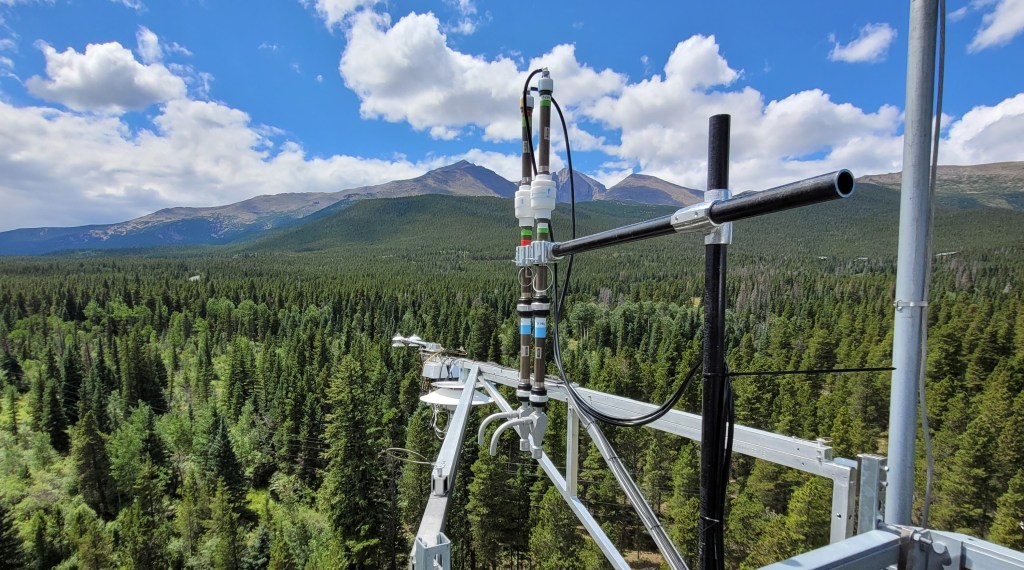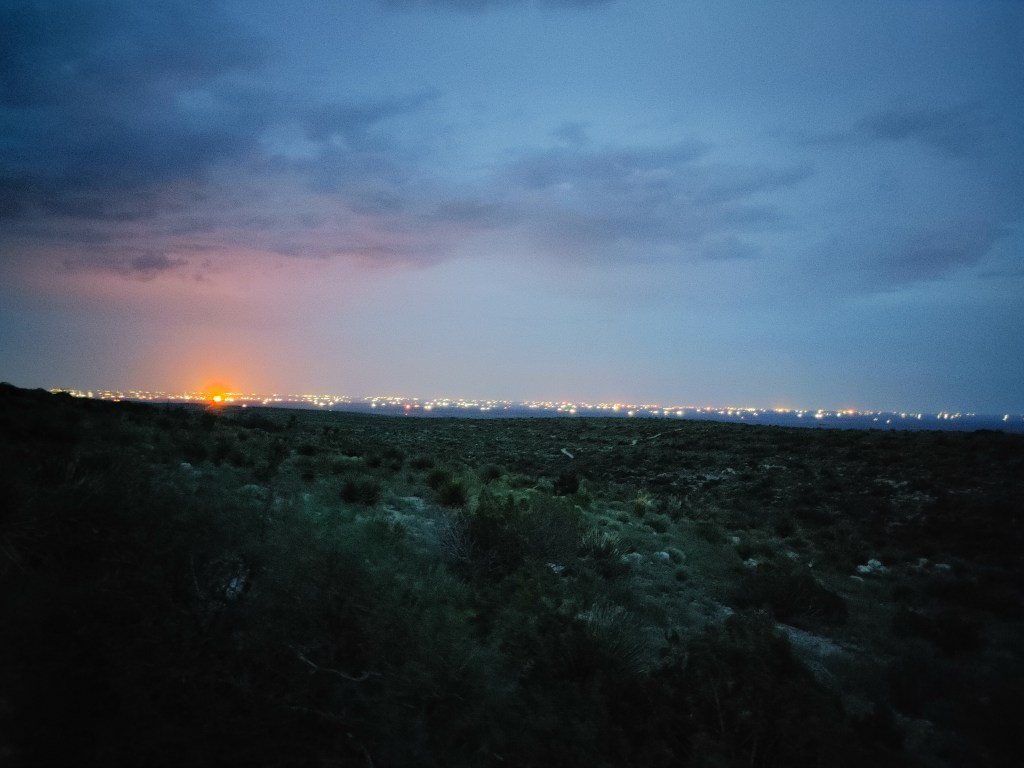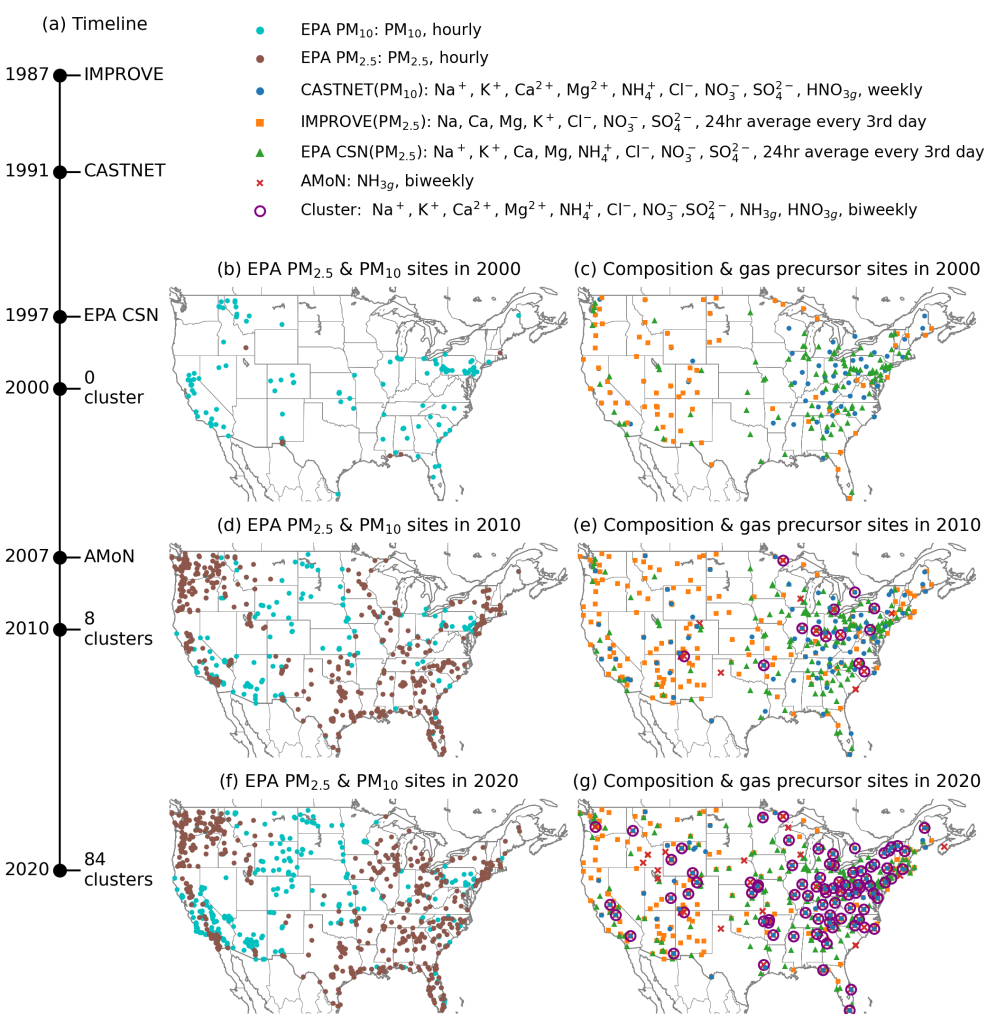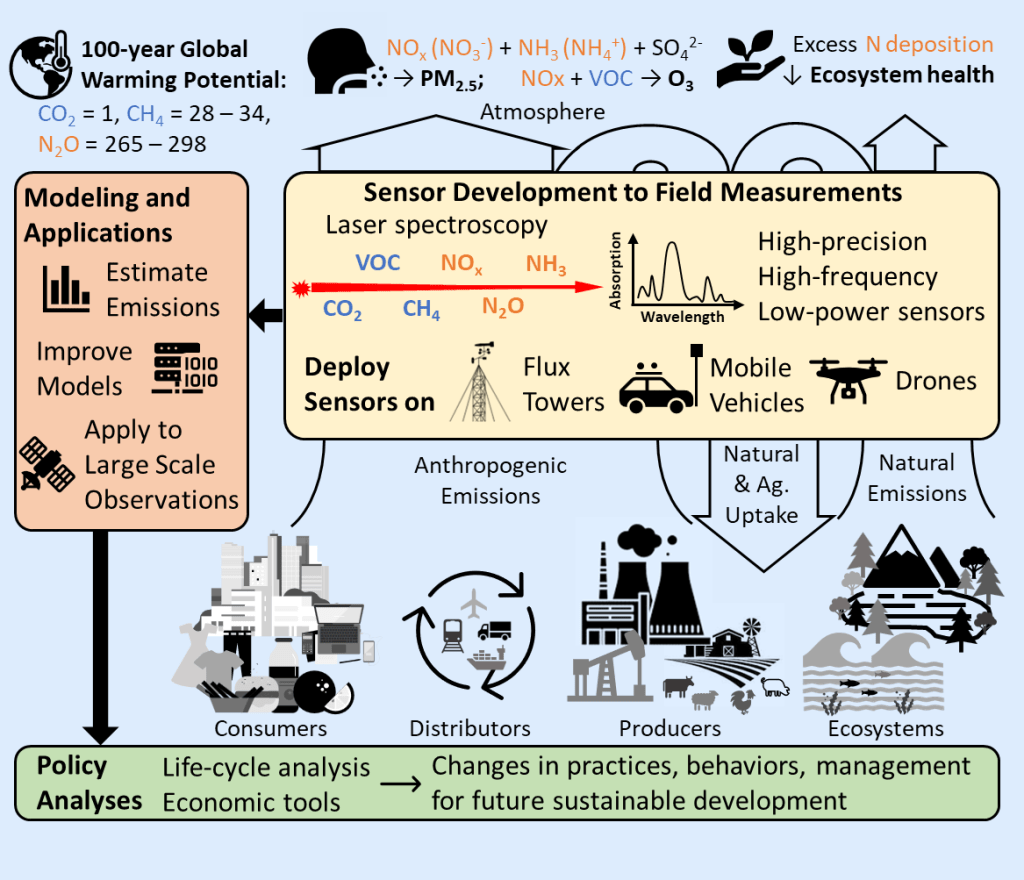Research Theme
Curbing climate change, reducing pollution that damages human and ecosystem health, and sustainably supplying food, water, and energy are grand environmental challenges of the 21st century. Atmospheric components of the carbon (C) and nitrogen (N) cycles, such as carbon dioxide (CO2), methane (CH4), volatile organic compounds (VOCs), nitrous oxide (N2O), ammonia (NH3), and nitrogen oxides (NOx=NO+NO2), significantly contribute to these environmental challenges. CO2 and CH4 are the two most important anthropogenic greenhouse gases (GHGs). N2O is the third most important anthropogenic GHG and also contributes significantly to stratospheric ozone depletion. NOx and NH3 are precursors of fine particulate matter (PM2.5), and NOx and VOCs react to form tropospheric ozone (O3). Increased atmospheric reactive nitrogen (Nr) deposition, including both oxidized and reduced forms of N, increases carbon sequestration. However, excess Nr deposition also leads to soil acidification, eutrophication, and biodiversity loss. Because of these impacts, managing the N cycle has been identified as one of the 14 grand challenges for engineering. Motivated by these challenges, my research focuses on observations and modeling of land-atmosphere interactions of the C and N cycles to foster informed decisions and actions.
Learn more about Sensor Development, Field Observations, and Modeling and Policy Analyses.
Sensor Development
Development of open-path sensors for eddy covariance (EC) flux measurements – The EC method is the most direct way to measure surface-atmosphere fluxes continuously. However, existing instrumentation for EC fluxes for reactive nitrogen species is too power-hungry (~ kW) and cumbersome for widespread deployment in remote ecosystems. An open-path sensor, where the air is sampled passively as opposed to an inlet/sample cell, solves the power/size issues. An open-path design also mitigates sampling artifacts for sticky gases like NH3. Such an approach was previously argued to be impossible for N2O and NH3 flux measurements. In brief, the changes in concentrations from a nominal flux would be overwhelmed by density (ideal gas law) and spectroscopic effects from temperature fluctuations for an open-path design. We overcame this challenge by developing a N2O sensor such that the spectroscopic temperature effects of the absorption lines nearly canceled the temperature-driven density effect. In the 2nd Edition of Fundamentals of Boundary-Layer Meteorology, Xuhui Lee considered this work a significant advancement in laser spectroscopy that raised hope for N2O open-path flux measurements.


Read more about the N2O sensor
Open-path sensors for NH3, CO, CO2, and SO2 – In addition to N2O, I also developed multiple open-path sensors for mobile sampling and early fire detection.
Field Observations
NH3 atmosphere-surface exchange – Combining simulated dry deposition and observed wet deposition, the National Atmospheric Deposition Program estimates that the contribution of NH3 dry deposition to total Nr deposition in the US increased from 12% in 2000 to 30% in 2019.Within 100 miles of NH3 hotspots, NH3 dry deposition on average could account for 40% of total Nr deposition. I found there are 25 National Parks within this range using satellite NH3 observations. Despite the importance of NH3 dry deposition, NH3 flux has rarely been measured directly in the US, partly due to the complex bidirectional nature of NH3 atmosphere-surface exchange. During my Ph.D. and postdoctoral work, we measured and modeled NH3 fluxes in Rocky Mountain National Park. Using backward-trajectory analysis, we linked high deposition to agricultural plumes transported to the Park, which means reducing local emissions during those events would be an effective strategy to reduce excess Nr deposition.


Read more about NH3 atmosphere-surface exchange at RMNP.
CH4 Emissions from Natural Gas Vehicles in China – The population of natural gas vehicles (NGVs) in China increased from 6000 to 6 million from 2000 to 2017, but their CH4 emissions had been overlooked. Using a mobile measurement technique that collected large numbers of samples, we showed that CH4 emissions from NGVs in China were much higher than previous estimates. With policy scenarios and life-cycle analyses, we highlighted the importance of emission standard enforcement, which could lead to a GHG reduction equivalent to eliminating emissions of 12 million passenger cars in China.
Read more about CH4 emissions from NGVs in China.
Source Characterization of Volatile Organic Compounds (VOC) at Carlsbad Caverns National Park (CAVE) – CAVE located in southeastern New Mexico, experiences elevated ground-level ozone (O3) exceeding the National Ambient Air Quality Standard (NAAQS) of 70 ppbv. It is situated adjacent to the Permian Basin, one of the largest oil and gas (O&G) producing regions in the US. Using positive matrix factorization (PMF) analysis of speciated VOCs, we characterized VOC sources and confirmed the impacts of O&G activities on VOC observed at CAVE.

Modeling and Policy Analyses
Regime shift in secondary inorganic aerosol (SIA) formation – Integrating observations from multiple observation networks and conducting aerosol thermodynamic simulations, I revealed a regime shift in SIA formation in the rural US. I showed that aerosol formation has become insensitive to NH3 perturbations across the rural US, indicating the lack of regulatory incentives of NH3 emission controls for air quality purposes. Meanwhile, emitted NH3 partitioned more into the gas phase. The annual mean molar fraction of gaseous NH3 in total ammonium (NH3 + NH4+) increased from 30 – 40% to 60 – 70% between 2011 – 2019. Because gaseous NH3 deposits faster than particulate NH4+ in aerosols, the regime shift also impacted spatial and temporal patterns of nutrient distribution, explaining aforementioned increasing trends in NH3 dry deposition, with impacts on the C cycle and ecosystem warranting further investigation. This work is currently under review in Nature Geoscience.

NH3 bidirectional flux models – Using the observations I made, I’m evaluating and constraining NH3 bidirectional flux models.

Redistribution of air pollutants by international trade – International trade affects global air pollution and transport by redistributing emissions related to the production of goods and services and by potentially altering the total amount of global emissions. The paper I jointly first-authored coupled a chemical transport model and an economic model and demonstrated the importance of such redistribution for the first time by combining macroeconomic tools and atmospheric chemistry modeling. It received the 2015 Cozzarelli Prize by PNAS and led to multiple follow-up studies.

